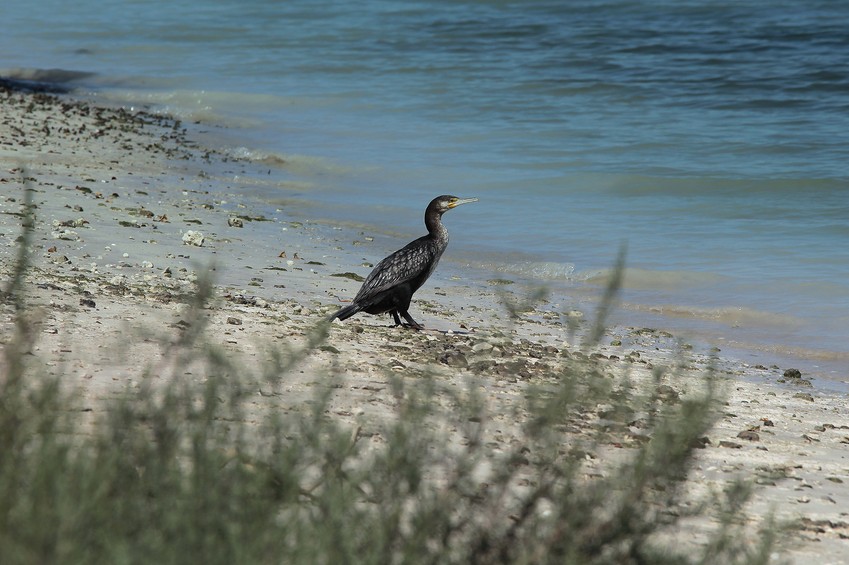PHALACROCORAX NIGROGULARIS - (OGILVIE-GRANT & FORBES, 1899)
Le Cormoran Socotra (Phalacrocorax nigrogularis) est une espèce d'oiseau de mer endémique du Golfe Persique et de la côte sud-est de la péninsule Arabique. Certains individus migrent occasionnellement vers l'ouest jusque sur les côtes de la Mer Rouge mais le premier individu décrit l'a été sur l'île de Socotra.
--------------------------------------------------------------------------------
SOCOTRA CORMORANT
Scientific classification
Kingdom: Animalia
Phylum: Chordata
Class: Aves
Order: Pelecaniformes
Family: Phalacrocoracidae
Genus: Phalacrocorax
Species: P. nigrogularis
The Socotra Cormorant, Phalacrocorax nigrogularis, is a cormorant that is endemic to the Persian Gulf and the south-east coast of the Arabian Peninsula. It is also sometimes known as the Socotran Cormorant or, more rarely, as the Socotra Shag. Individuals occasionally migrate as far west as the Red Sea coast, but although the first specimen recorded was found on Socotra island, giving the bird its name, it is unlikely that it breeds there.
The Socotra Cormorant is an almost entirely black bird. In breeding condition, its forecrown has a purplish gloss and its upperparts have a slaty-green tinge, there are a few white plumes around the eye and neck and a few white streaks at the rump. Its legs and feet are black and its gular skin blackish. All these deviations from pure black are less marked outside the breeding season. Wing breadths of 275–310 cm have been recorded.
There is little information on this species' foraging or diet. Like all cormorants its dives for its food. Older reports suggest that it can stay submerged for up to 3 minutes, which is high for a cormorant and suggests that it would be capable of deep diving. However there are also reports of forgaging in flocks, and this is more usually seen in cormorants that feed in mid water.
The birds are highly gregarious, with roosting flocks of 250,000 having been reported, and flocks of up to 25,000 at sea. Some authors, such as Paul Johnsgard, place this species, along with a number of other related cormorants, in a genus Leucocarbo.
Since 2000, this species has been listed as Vulnerable on the IUCN Red List, on the grounds of its small range (only a small number of breeding locations are known, with estimates ranging from 9–13). Its number are suspected to be undergoing a continuous and rapid decline because of human development near its nesting colonies; a recent estimate of the world population put it at about half a million. The only nesting colony remaining in the Gulf is one of about 2,000 birds on the Bahraini Hawar Islands off the coast of Oman, and this is a Ramsar Convention listed site. The birds may also be affected by oil pollution at sea. During the First Gulf War images of badly oiled cormorants from the Gulf were regularly shown in the western media, and although the Great Cormorant is also found in the Gulf, it is likely that many of these were Socotra cormorants. The Socotra Cormorant is one of the species to which the Agreement on the Conservation of African-Eurasian Migratory Waterbirds (AEWA) applies.
